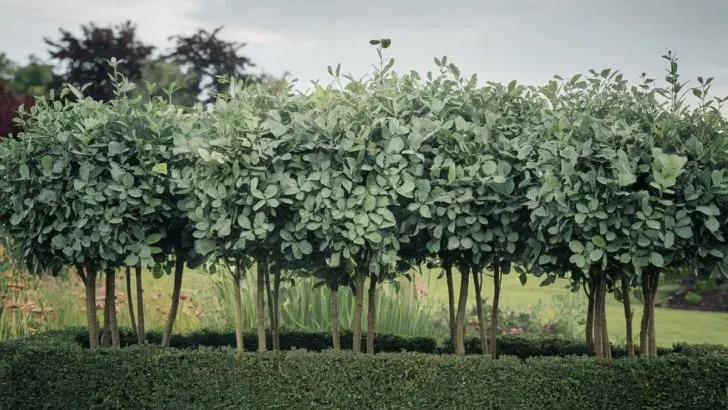Have you ever heard of silver buttonwood before? We believe that his reputation is heard far and wide.
If you haven’t, today you will hear all about the silver buttonwood tree. A gray-green tree that looks like a dust-covered tree will be the most beautiful tree in your garden.
Buttonwood is not demanding. It does not require much care, money, or time. You won’t have to shell out your pockets to get everything you need to grow it.
You will remember me when the greenery in your garden wakes up in the winter, I know. But let’s learn more about wood now.
Let’s learn all about the silver buttonwood tree care guide and appearance.
About The Silver Buttonwood Appearance
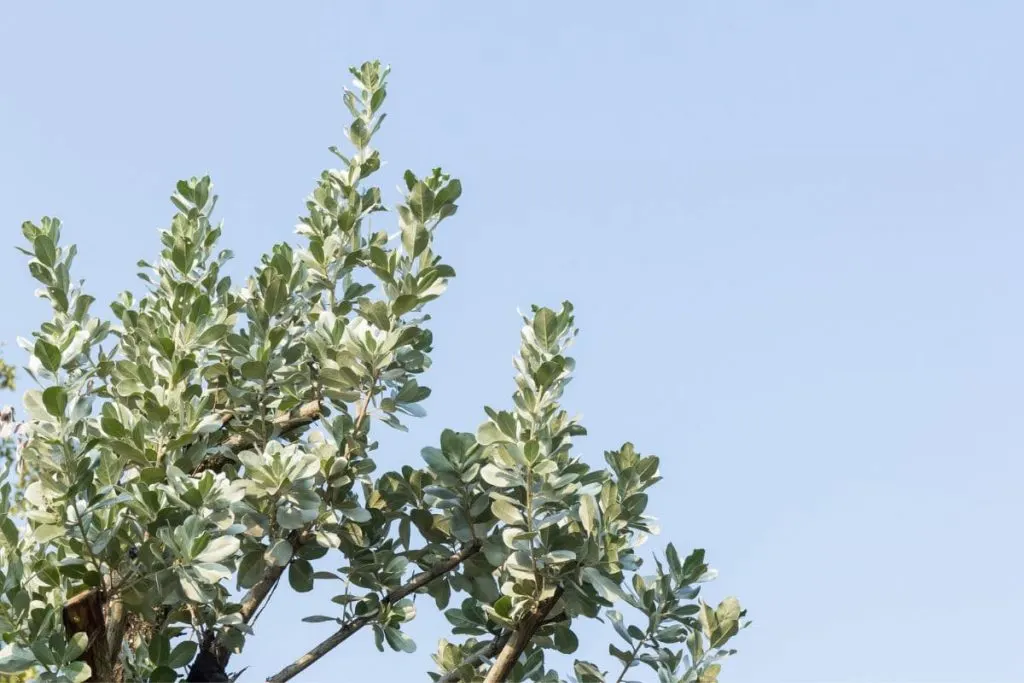
Florida native plants/shrubs/tree is a perfect yard-hedge tree. As the tree matures it gets bigger and more beautiful.
At one point, we’re sure you’ll have the most beautiful tree in your neighborhood. Break all the green monotony with silver buttonwood trees in your garden.
When you trim wayward branches occasionally the tree will be much thankful to you and give you even more branches the next season. Let’s learn all bout its main characteristics below.
- Native habitat: Florida native, South Florida
- Botanic name: Conocarpus erectus var sericeus, silver buttonwood Conocarpus
- Family: Combretaceae
- Subfamily: Conocarpus
- Type of the plant: small tree, shrub,
- Flowers/flowers color: white flowering plants
- Fruits: red-brown fruits
- Leaf shape and color: silver leaf surface, velvety soft leaves dusted
- Foliage: silver foliage plants, silvery gray color, neatly manicured appearance, wayward branches
- Use: clipped hedge shrubs, residential and commercial landscapes, stunning hedge
- Growing zone: USDA zone 10, not adapted well to cold winter temps
- Growing type: moderate to fast growers
How Big Do Silver Buttonwood Trees Get?
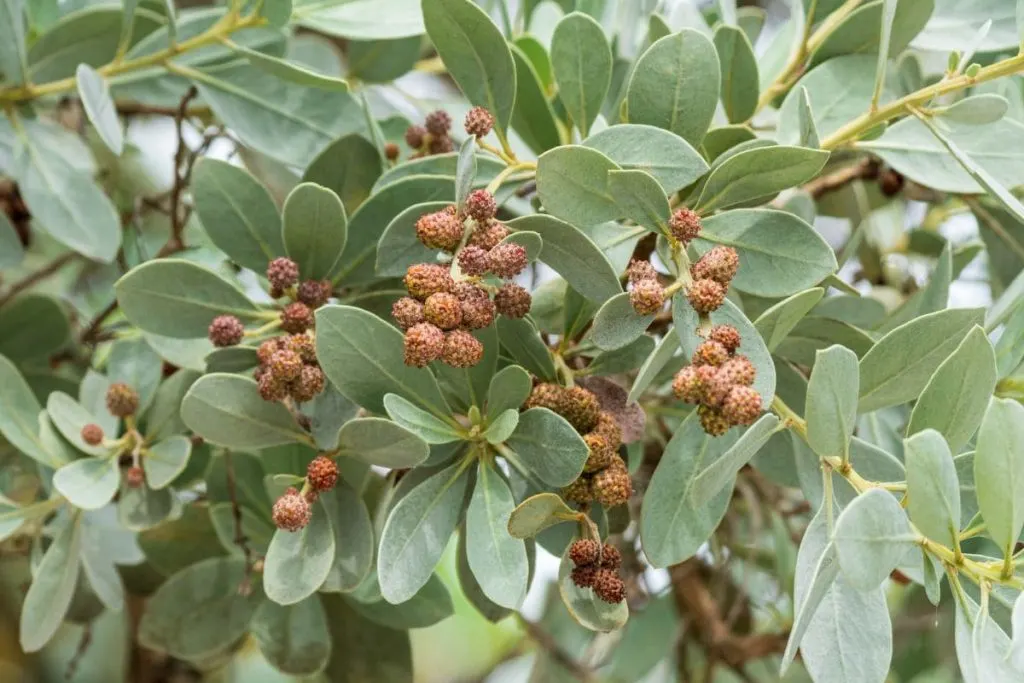
Silver buttonwoods grow up to 40 feet with around 20 feet spread. It’s often grown as a small yard tree, but if you let it grow, it can be a perfect hedge tree. They can make a nice patio tree as well.
When grown indoors, they will reach around 10 feet maximum. Some people buy a growth hormone for these plants, but we advise you to grow your plant naturally.
Can You Keep A Silver Buttonwood Tree Small?
With smart and correct trimming, you can keep your buttonwood tree small. Most people who grow it in their yard, in fact, keep it small all the time.
When kept small, its shape looks much better and the tree is also growing better and healthier. Trimming encourages its growth for sure.
Are Silver Buttonwood Trees Messy?
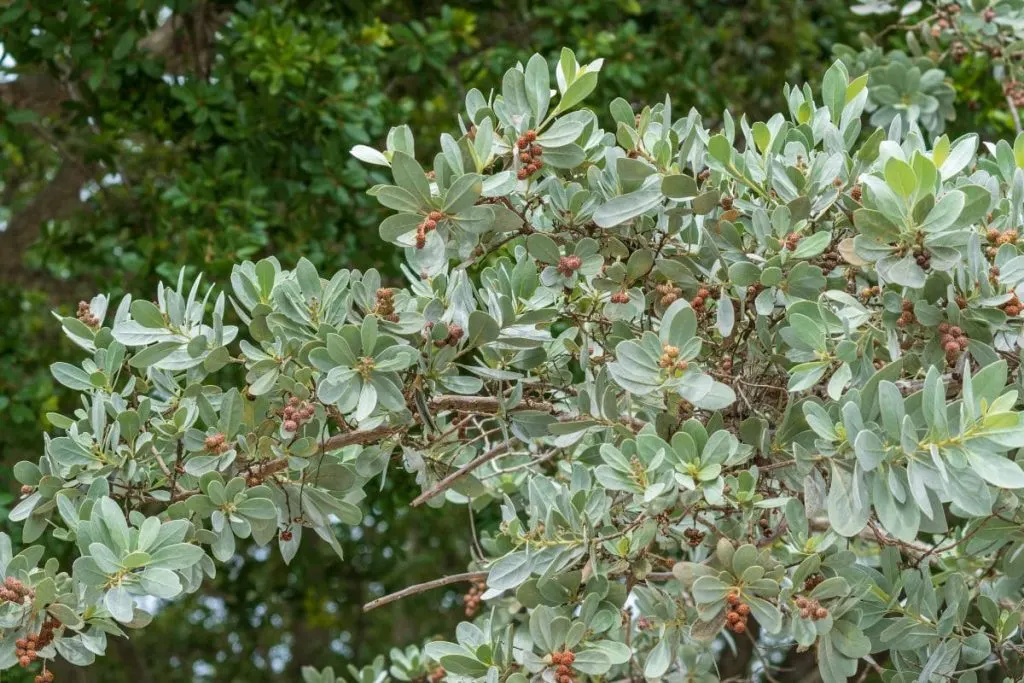
The buttonwood tree is an evergreen tree so you won’t have to worry about the mess. When autumn comes, you won’t have to worry about cleaning the leaves in your yard.
Some people like a fall effect in their garden but you won’t have such an effect with a buttonwood tree. If you care about your yard’s appearance and keeping it clean, this tree is perfect for you then.
Is Silver Buttonwood Tree Poisonous To Dogs?
Is Silver Buttonwood A Flowering Tree?
In the spring and summer, the silver buttonwood trees produce white flowers. Plants rarely don’t give any flowers. That could happen after the frost, strong winter, etc.
In the winter months, you should protect it during winter. You will definitely see a change on your tree in the spring if you don’t protect it.
Care Guide For A Silver Buttonwood Tree
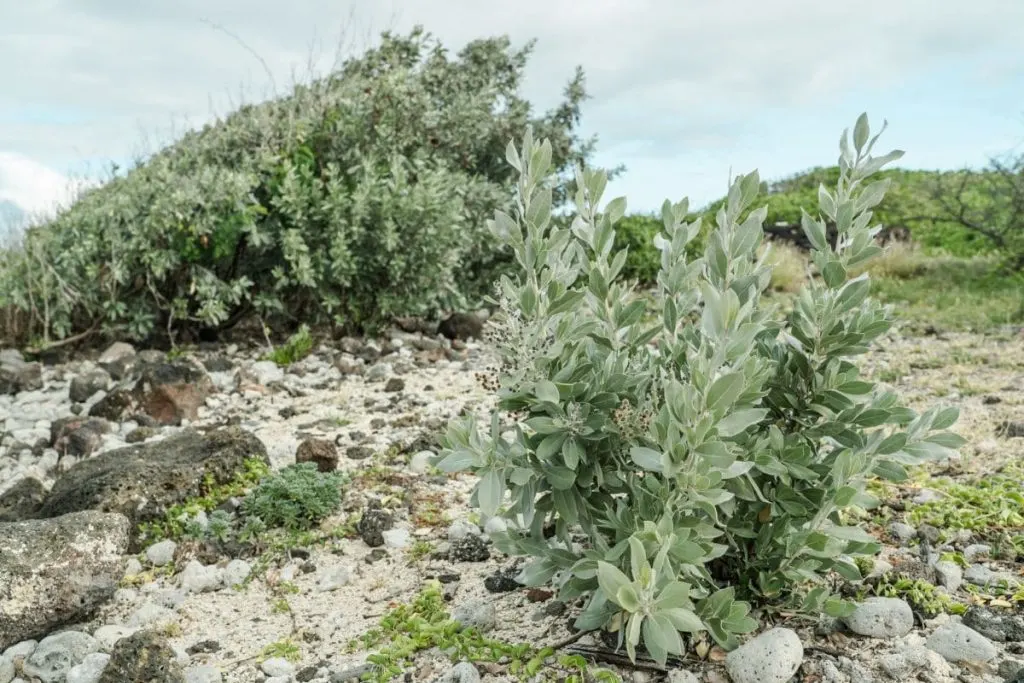
You’re probably not sure what soil to choose now for this tree. Nutrient-poor soils? Is the tree salt tolerant, can you risk with the salts?
Is the tree drought tolerant, does it need the full sun position? Let’s learn all about the preferred soils for this tree and other simple things for its care guide below.
Light Needs
This tree will not grow fully or at its maximum if you plant them in the shade. Of course, with good fertilizer and water, the tree will grow, but not nearly as well as in a sunny location.
The tree likes semi-shady and semi-sunny places the most. I never had them in my garden, but my neighbor had two.
Both were planted in places with an average of 2 hours of sun per day and semi-shade the rest of the day.
I can freely say that they were the biggest trees in the neighborhood. Sometimes even a perfect position does not dictate success if you ignore other factors.
Water Schedule
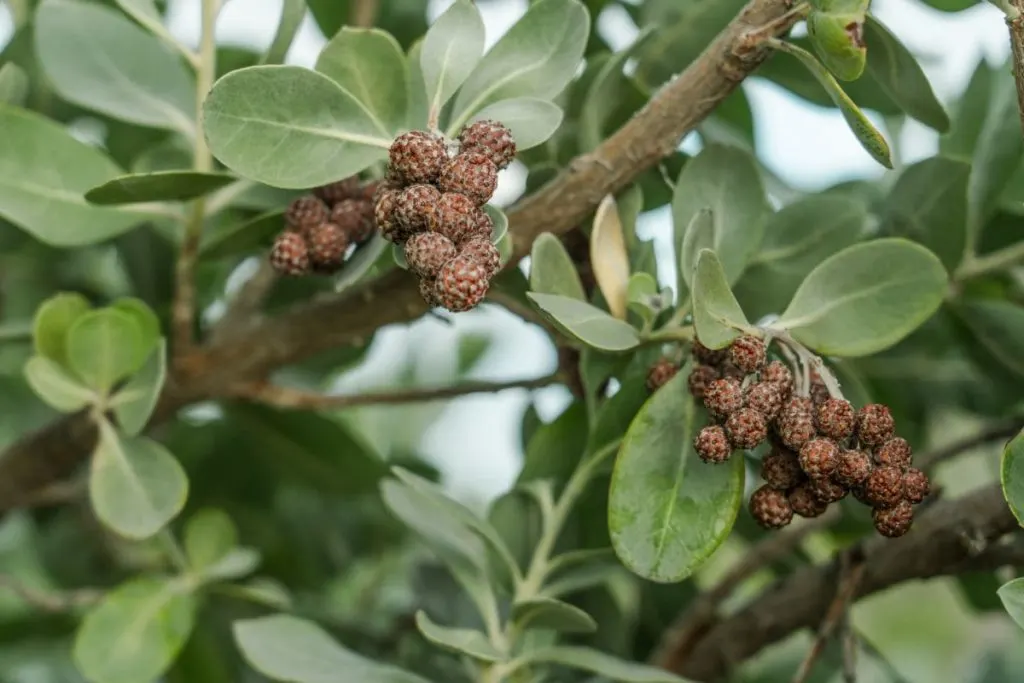
This will surprise you, I’m sure. Watering every two to three days a week is recommended for this tree.
One must wonder how the soil dries so well in the first place. The roots of this plant, once developed, absorb water very quickly.
You will notice already after two days that the surface of the soil and the soil around the tree is a little wet. There will be no water when you put your finger in the soil, but you will notice the moisture.
Then feel free to water the tree without worry. You need to pour at least half a gallon of water around the entire tree to grow properly.
Soil Type
This tree is not picky at all with its perfect soil requirements. Plant it in any type of soil and it will grow perfectly. The trees are salt tolerant, so you can get such soils.
Avoid more acidic soils, they still like them too much. You can fertilize the soil immediately after planting or later during the flowering period.
Temperature
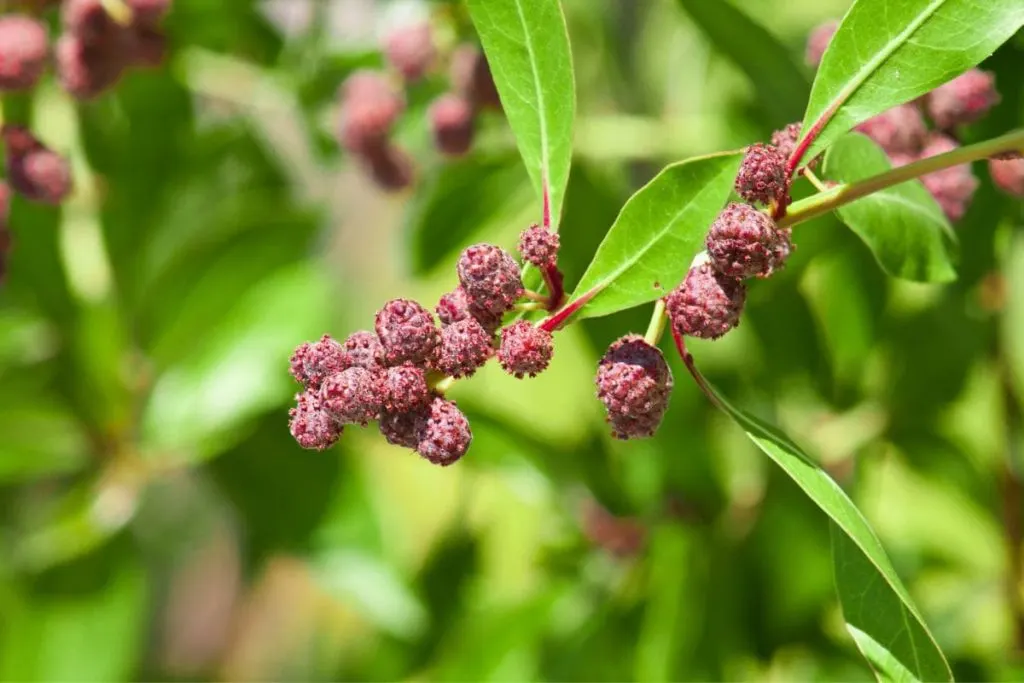
This tree is a Florida native tree as we already mentioned. It grows the best in USDA zones 10. It doesn’t stand well with cold winter temperatures or frost.
If you live in colder regions, we advise you not to buy it and grow it right away.
That would be like growing a cactus plant outside in Alaska. It simply doesn’t work well. The best temperature ratio for these plants is between 65 and 80 F.
Humidity
Florida is well known for its high humidity levels. The average humidity levels are around 70-75%. If you live in less humid regions, trees will definitely feel that.
The best thing you can do is to buy a similar plant if you’re attracted to its look. We advise you to think about flowering trees in Georgia or flowering trees in North Carolina.
If you don’t live in such areas either, maybe decide on indoor trees. But leave this tree for hotter regions because it won’t thrive so well in low-humid areas.
If you’re a fan of vibrant colors, then without any doubt think about flowering trees yellow.
Fertilizer
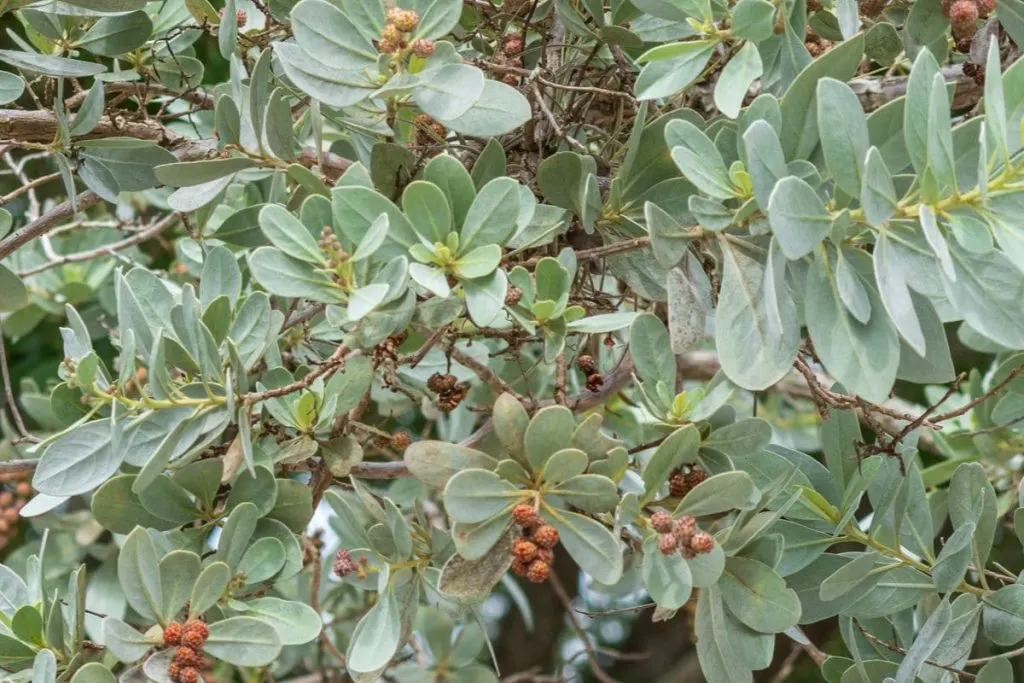
You should fertilize your buttonwood tree at least 3 times per year. In the spring before its flowering time, during the flowering time, and in the late summer. Do not fertilize the tree in the fall or winter.
Pruning
Prune to reduce the size and prune when you notice damage on the leaves. Mostly, you may spot yellowing leaves issue and then you should prune the tips for sure.
Propagation
The easiest way to propagate the plant is by cuttings. You can also try seeds, but the seeds must be in good condition for sowing. Not all seeds that you leave aside are good for sowing.
Most of them don’t work because a lot of people don’t know how to take care of them. So take cuttings of mature branches and plant them in the ground. In the best way, you will see new growth within a maximum of 5 days.
Final Thought
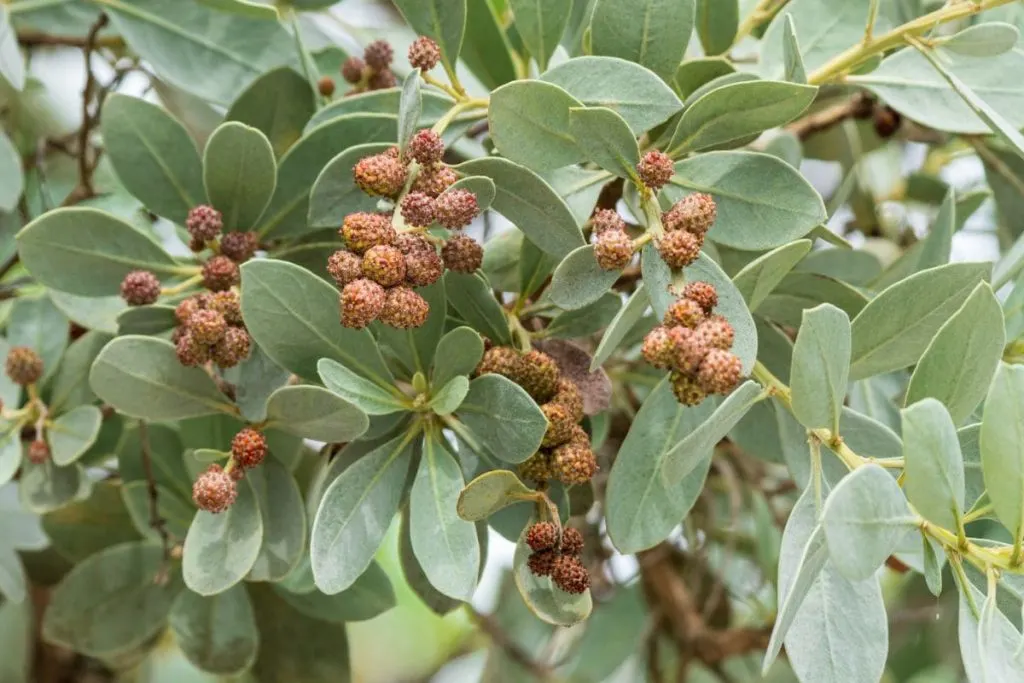
How did you like the article about a silver buttonwood tree? I know you have already decided on a positive decision. You will thank me very much one day.
Who wouldn’t want an evergreen tree in their garden? Evergreen trees are what we love in winter. With a cup of tea or hot chocolate, a wonderful view of the garden covered with snow, and beautiful silver buttonwoods in the middle.
It sounds like a fairy tale to me, I don’t know about you. We hope that the care guide was helpful if you are not very skilled with tree growing. Now you are after reading it, don’t worry.
That would be all for today, see you soon!

